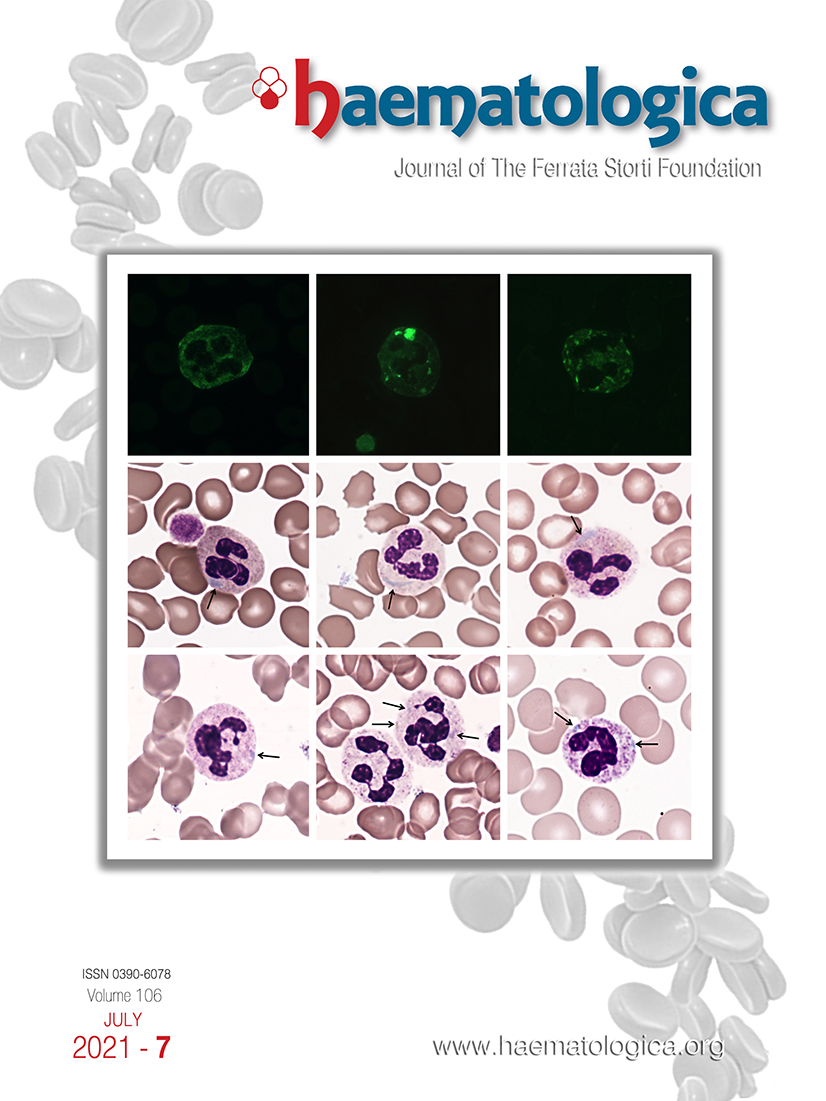Acharacteristic of MYH9-related disease (MYH9-RD), the most frequent inherited thrombocytopenia, is the presence of aggregated MYH9 protein in the cytoplasm of neutrophils. Immunofluorescence staining of normal neutrophils shows the homogneous distribution of MYH9 protein (A). In MYH9-RD MYH9 protein aggregates due to mutations in the N- or C-terminus. C-terminal mutations usually result in one or a few large aggregates which potentially associate with small aggregates (B), while N-terminal mutations (mutations in the motor domain) of MYH9 lead to the formation of many small aggregates only (C). Both small and large aggregates, named Döhle-like inclusion bodies, are detectable by immunofluorescence analysis of all neutrophils of all patients with a detection specificity and sensitivity close to 100%. However, in May-Grünwald-Giemsa stained blood films, these aggregates are more difficult to identify and are only detected in a small percentage of neutrophils in around 50% of patients. Due to their characteristic round or spindle shape large aggregates are more easily identified as light blue corpuscles usually located at the cell periphery (D to F), whereas small aggregates (G to I, arrows) are more difficult to identify.1
Footnotes
Correspondence
Disclosures
No conflicts of interest to disclose.
Contributions
Both authors contributed.
References
- Balduini CL, Pecci A. Inherited thrombocytopenias. Haematologica. 2020; 105(Suppl 1):S237-247. https://doi.org/10.3324/haematol.2019.244939PubMedPubMed CentralGoogle Scholar
Figures & Tables
Article Information

This work is licensed under a Creative Commons Attribution-NonCommercial 4.0 International License.

